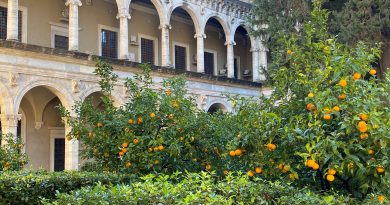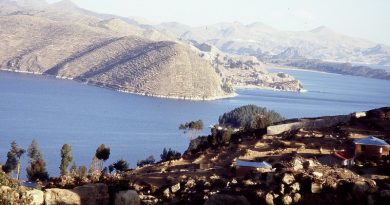Ponte dei Saraceni, Adrano
The “Ponte dei Saraceni” is one of the most beautiful and historically interesting building of the Sicilian Middle Ages. The bridge has lasted for about a thousand years on the major river of Sicily, “the Simeto”, characterized by a varied geological structure that provides the alternation of waterfalls, gorges and lava flows. The river falls for a good stretch in the so-called “Gorges” creating a natural water play of great suggestion. The district is called “Salto del Pecoraio” thanks to an ancient legend about a shepherd in love who jumped to the other side to join his beloved. In the neighboring district of Mendolito is the area of the largest, and perhaps most evolved, Hellenic city in Sicily: the Sicula town of Mendolito, dating back to the IX-V century. a.c .. The city wall has been identified and recently brought to light by the monumental Porta Sud.
From the archaeological finds in the city of Mendolito, we can deduce that in the place where today stands the bridge, already in the Neolithic age, there could exist a structure, possibly a passage, consisting of a wooden walkway, due to the need for trade and exchanges between the cities on the streets of the Simeto, frequented by numerous travelers who always beat the same streets to cross the Simeto. It is probable that during the Roman domination on the island, it is considered appropriate to replace with a solid stone architecture, the old Sicilian-Greek passage on the Simeto. Thus one of the “viae frumentariae” was born, which was used to transport the considerable foodstuffs from central-eastern Sicily to the ports of the Ionian coast, for the use and feeding of the inhabitants of the capital.
So the bridge was part of an ancient road, which from the northeastern Sicily, along the rivers Alcantara and Simeto led to the plain of Catania, with branches for Regalbuto, Troina, Agira, Centuripe, Adernò, Paternò, Catania and Lentini. It connects the territory of Adrano with that of Centuripe.
Built in the Roman masonry, of which there are the bases of the major arch, then with the Islamic occupation, the Arabs probably did it to restore the bridge activity following a collapse due perhaps to a flood of the Simeto. Thus they replaced the canons of their architecture with Roman art, taking care of the chromatic effects, with the alternation of light and dark stones in the arched arches. The structure that emerges from it, with an acute arch, typical of all Islamic architecture, will thus acquire slenderness and lightness. The bridge, in Norman times, was part of an important road that connected the city of Troina, the first capital of the kingdom of Roger I of Altavilla, with Catania.

With the arrival of the Normans and until the eighteenth century, the bridge and all the vast territory around it, was part of various feuds, including the feud of the Duke of Carcaces. The earthquake of 1693 caused heavy damage to the bridge, causing the last arch to collapse towards the east and leaving the main archway and the other small ogival arch next to the major archway. During the eighteenth century there were many restoration and repair works and until the first half of the eighteenth century the only existing road to go to Catania passed through the Saracen Bridge. Only at the end of the eighteenth century, the bridge was downgraded to a simple “path” and lost its important function as a link between interior and outlet to the sea.
Even the birth of new, more comfortable ways of communication contributed to losing its importance. Subsequently, the construction of the Biscari aqueduct bridge (1761-66, 1786-91) which crossed the Simeto along the Guado della Carruba, contributed more to the loss of the original function of the Saracen Bridge.
Of the ancient structure today only the central gothic arch is preserved. The other arches, one smaller also Gothic and another Roman, were destroyed during the flood of 1948 and then rebuilt. Under the bridge, the river digs deep gorges in the lava basalt due to the turbulent waters.
From the year 2000 the site where the Ponte dei Saraceni stands is inside the S.I.C. (Site of Community Interest) called Natural Reserve “Forre laviche del Simeto”.
The “Simco lava Forre” are gorges, with walls of varying height between 5 and 15 meters, excavated by the Simeto river in the basalt formed as a result of lava flows coming from Etna.




